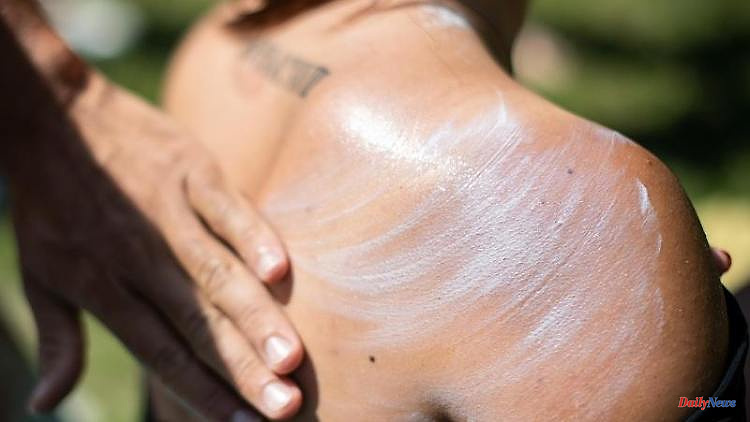The temperatures have been summery since mid-May and the sun is beating down from the sky. It's high time to start thinking about sun protection. But how do you actually find the right one?
If you want to enjoy the bright early summer sun, you should definitely protect your skin. Because it is our largest organ and UV rays can cause long-term damage. Around 90 percent of skin aging is caused by insufficient sun protection. But finding the right protection is a science in itself. What do you have to consider?
How well does sunscreen protect against UV rays?
There are two different types of UV rays: UVA and UVB. The former can penetrate deep into the skin and damage the skin's collagen. They are the reason for pigment spots and premature aging of the skin. UVB rays are shorter and damage the skin superficially. Both types play a role when it comes to skin cancer. Even when the sun is not visible, UV rays can penetrate through cloud cover. Dermatologists therefore recommend thinking about sunscreen every day.
If you are looking for the right sunscreen, you cannot avoid the term SPF. SPF stands for "Sun Protection Factor" and indicates how much protection a product provides. Most sunscreens in this country have an SPF between 15 and 50. What does that mean exactly? A lotion with SPF 15 blocks about 93 percent of UVB rays. With SPF 50 it is around 98 percent.
How do I find the right sunscreen for my skin?
The required sun protection factor can be calculated using your own light type and the UV index: According to the classification of the American dermatologist Thomas Fitzpatrick, a distinction is made between six skin types: Skin type I is the Celtic type, skin type II is the Nordic type Skin type III around the mixed type. Skin type IV is the Mediterranean type, V and VI are dark and black skin types. The lighter the type, the lower the skin's own protection time. The UV index is a scale from 1 to 10 introduced by the World Health Organization (WHO). The following applies: the higher the value, the faster sunburn occurs.
For example, you can call up the current UV index of your region via the German Weather Service (DWD) and multiply it according to the type of light: for type 1 times four, type 2 times three and type 3 times two. A concrete example: If a person with very fair skin wants to be in the sun on a day with a UV index of 7, you multiply seven times four and get 28. The appropriate sun protection factor in this case would be the standard SPF 30.
Sunscreen is not just sunscreen. It's not just the sun protection factor that matters, but also the consistency. Those with dry skin should opt for a creamy, moisturizing consistency, while a gel is more suitable for oily, seborrheic skin. Those who are prone to so-called "Mallorca acne", i.e. skin impurities from sunbathing, should use oil-free sun protection gels without emulsifiers.












